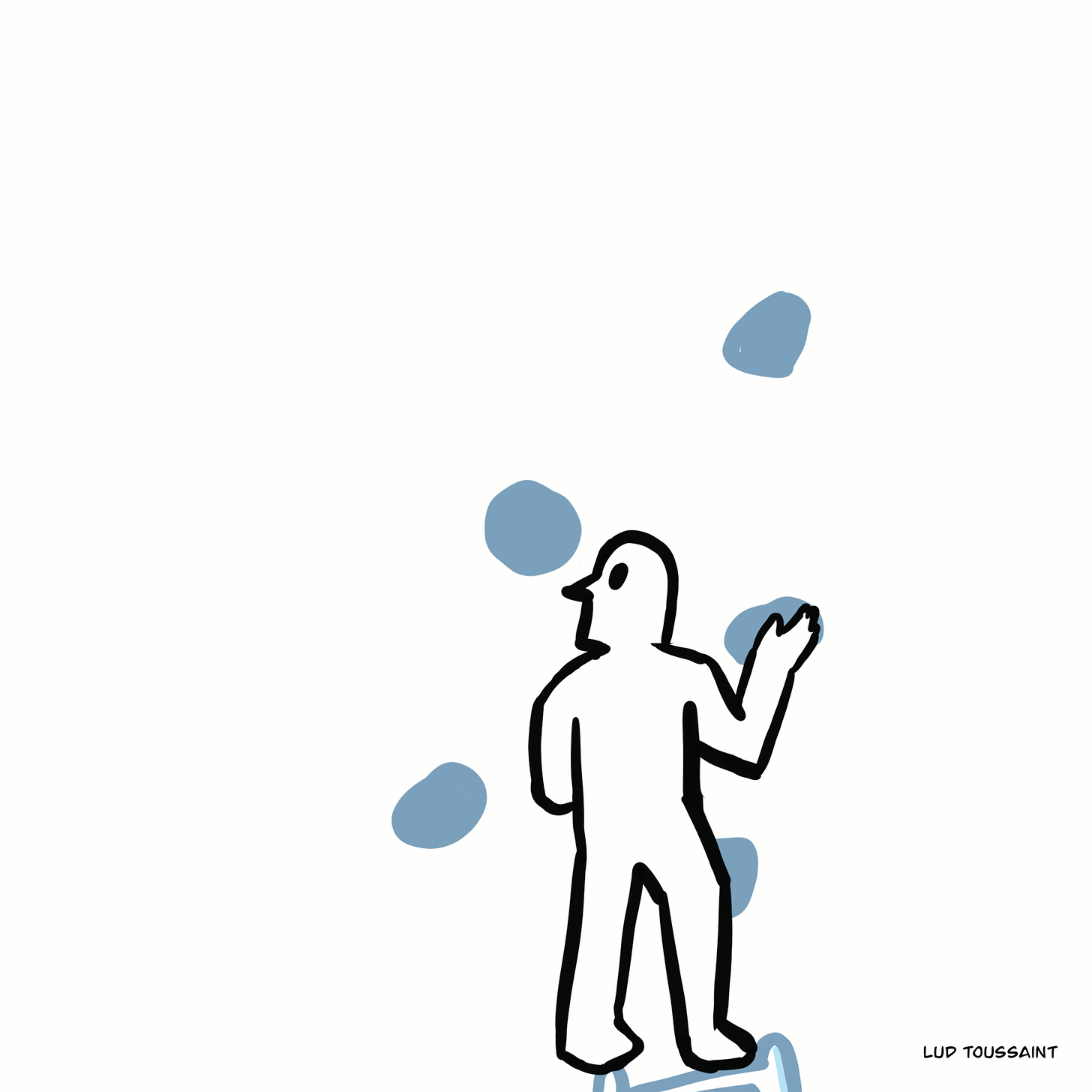1,103 words | Around 5-minute read
Hey welcome,
For those who joined us recently, I'm Lud, a passionate visual thinker, and we are currently doing a visual summary for “Hidden Potential” by Adam Grant.
The Game Plan
In the previous post, Part I focused on the importance of Character Skills. Today, we move to Part II, where Adam Grant explores how Structures for Motivation help us sustain growth, overcome stagnation, and keep pushing forward.
You can see the rest of the schedule below, with the full book being covered by the end of March.
Hidden Potential - Content
✅ Part I: Skills of Character (Check it here)
✅Chapter 1: Creatures of Discomfort
✅Chapter 2: Human Sponges
✅Chapter 3: The Imperfectionists
📍 Part II: Structures for Motivation (current)
📍Chapter 4: Transforming the Daily Grind
📍Chapter 5: Getting Unstuck
📍Chapter 6: Defying Gravity
🔲 Part III: Systems of Opportunity (March 30th)
Chapter 7: Every Child Gets Ahead
Chapter 8: Mining for Gold
Chapter 9: Diamonds in the Rough
Part II: Structures for Motivation
How do you stay engaged and keep progressing toward your goals?
If Character Skills determine how we act in difficult moments, establishing Structures for Motivation is the external support we need to make growth sustainable. Adam calls this “Scaffolding” and assigns it 4 characteristics:
Scaffolding
1. Scaffolding generally comes from others
2. Scaffolding is tailored to the obstacle in your path
3. Scaffolding comes at a pivotal point of time
4. Scaffolding is temporary
1.Transforming the Daily Grind
Are deliberate practice and obsession the only path?
You may have heard of the 10,000 hours of deliberate practice needed to achieve mastery. Grant challenges this idea and proposes to focus instead on “deliberate play”, where we inject novelty and creativity into our routines.
You are not tracking your hours; You’re tracking your improvements
Enjoying the process instead of being solely outcome-driven is the key, but this requires redesigning the tasks themselves to make them fun.
Adam takes the example of Stephen Curry's training,
Steph has always shown deep character skills but was really underrated in college due to the obvious flaws in his play, including his shots. His coach Brandon Payne focused on short games changing every 20min, with a time and score to beat to simulate the fatigue of a real basketball game.
He set up […] to make the hardest parts of practice easier- to help Curry make more progress while relying less on sheer discipline
Today Stephen is one of the best players in the NBA, and without a doubt the best shooter.
Adam Grant suggests that while you may not end up world-class in your field, you can make daily practice enjoyable and more fruitful by:
🎮 Creating fun Skills-building challenges
🏆 Competing against yourself
💡 Experimenting with different approaches to keep learning fresh
😴 Taking structured breaks to avoid burnout
How could you introduce variety into something that feels repetitive?
How could you be proactive in taking rest and recovering?
2. Getting Unstuck
Pushing through or Backing up?
At some point, we all hit plateaus. Progress slows, frustration builds, and we start to question our abilities. So, how do we break through?
Backing up means scrapping our current plan and starting over. […] We’re regressing in order to progress.
Grant cites some interesting research - often, when performance stagnates it usually drops before ascending again!
To keep progressing we need to become comfortable being lost as we try to find a new way forward.
A good compass signal when you’re going off course and orients you in a better direction
Compass can come in various ways, for example books or online content, but one of the best way is seeking guidance from others.
As guides, prefer Good Teachers over Great Experts; those who have recently mastered the skill are often better at explaining how they overcame their challenges.
Adam also advises to:
Have multiple guides, helping you chart your own path
Take a detour using side interest to Rack up small wins and feel progress
Plateaus are not dead ends; they let you know a change is needed for new breakthroughs!
If you are on a plateau, what would “backing up” means in your situation?
3. Defying Gravity
It was OUTSIDE you all along ?
Often, a deeper motivation can be found outside of ourselves!
For Adam, great resilience comes when we shift the focus from our personal achievement to a greater external purpose.
A simple external motivation can be found in learning as a group. Being accountable to, and for others, is a powerful motivator. On top of that, teaching other is a proven way to solidify learnings for yourself.
All it takes is embracing the discomfort of putting yourself in the instructor seat before you have reached mastery. Even just being told you’re going to teach something is enough to boost learning.
To illustrates this, Adam takes the example of the “golden thirteen”, the first group of African-American men able to take the test for entering the U.S. Navy.
(The short video below - 4min, describes their journey)
Given only half the time to prepare than their white counterparts (8 weeks), and likely less than willing instructors, they still all managed to pass, and not only that but with the highest score recorded in the history of the Navy!
How did they do it?
👨🏾🏫 They taught and mentored each other
💨 They used doubt as fuel
➡️ They recognized their impact
Not having enough time to cover the full program, they split the lessons between each members, and each taught the others their parts.
They worked day and night, and knew that their results would shape the future for all future African-Americans. Thanks to their achievement, nobody could deny that race shouldn't be a factor in defining who could serve.
The responsibility of each generation is not to please our predecessors - it’s to improve conditions for our successors.
Who could you teach, mentor or inspire as you learn?
Conclusion
Motivation isn’t just about willpower, it’s about creating systems that support long-term growth. Throughout Part II of "Hidden Potential," Adam Grant provides strategies to sustain motivation:
🎮 Deliberate play keeps routines fresh and engaging
🗺️ Adjusting methods or backing up helps break through plateaus
🪖 Looking beyond ourselves creates a greater sense of purpose
Next, we move to Part III: Systems of Opportunity on March 30th, where we’ll explore how environments and social structures shape our ability to succeed.
Why not try this before next time:
Take a task where progress is slow, and apply one of these strategies to make it more engaging. Share your experience, I’d love to hear how that worked for you!
See you on March 30th!











Wow, there’s so much to unpack here. I haven’t read this book yet, but I’m really looking forward to it. For me, finding ways to keep things interesting is essential—otherwise, I get bored fast.
With ADHD, I can hyperfocus like nobody’s business, but I can’t do that all the time. When I’m not in that mode, it’s crucial to have multiple things to focus on—whether that’s writing different pieces, checking various sources, or reading different articles as I go.